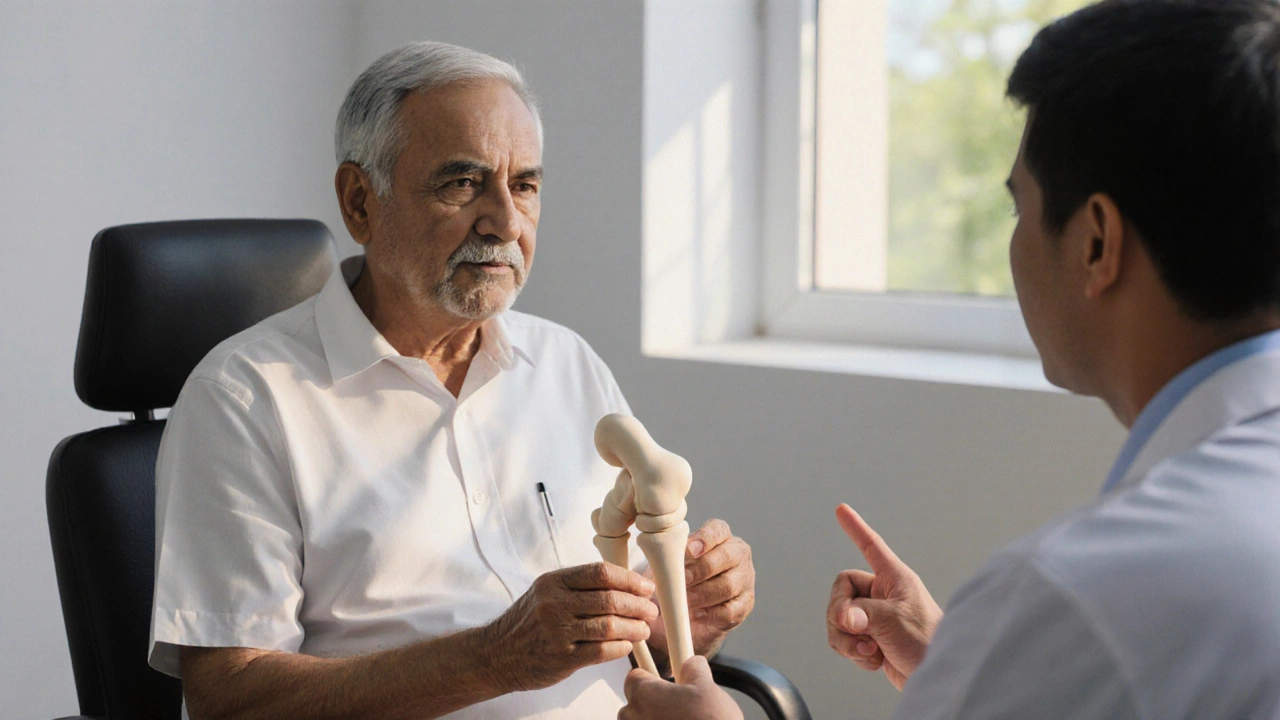Knee Replacement Complications: What You Need to Know
When dealing with knee replacement complications, the problems that can arise after a total knee arthroplasty such as infection, prosthetic loosening, or persistent pain. Also known as knee arthroplasty complications, it can turn a hopeful surgery into a challenging recovery.
A total knee replacement, the surgical procedure that swaps damaged joint surfaces with artificial components is usually performed to relieve severe osteoarthritis, a degenerative joint disease that wears down cartilage and bone. While the surgery can restore mobility, it also opens the door to specific risks. prosthetic infection, a bacterial invasion of the implanted joint is one of the most serious, often requiring antibiotics or a revision operation. Another frequent issue is prosthetic loosening, when bone no longer firmly holds the implant, which can cause pain and instability.
Common Types of Complications
Understanding the range of possible complications helps you spot warning signs early. Knee replacement complications typically fall into three groups: infection, mechanical failure, and delayed healing. Infection may show up as redness, swelling, fever, or drainage from the incision site. Mechanical failure includes loosening, wear of the polyethylene insert, or fracture of the implant components. Delayed healing often manifests as persistent stiffness, limited range of motion, or ongoing pain despite physical therapy.
Managing these issues requires a combination of early detection, proper rehabilitation, targeted exercises and therapy that restore strength and flexibility, and, when needed, medical intervention such as antibiotics or revision surgery. For instance, a prompt course of antibiotics can curb a superficial infection before it spreads to the prosthetic surface. Conversely, a loose implant may demand a surgical revision to replace the faulty component.
Prevention starts long before the operating room. Controlling blood sugar, quitting smoking, and optimizing nutrition reduce the risk of infection and promote bone health. Your surgeon will also assess bone quality; patients with weak bone may benefit from cemented implants that provide extra stability. Post‑operative care doesn’t stop at the hospital—regular follow‑up X‑rays help catch early signs of loosening, and a structured physiotherapy program keeps the joint moving and muscles strong.
Each patient’s journey is unique, but the core principles stay the same: monitor the incision, watch for unexplained pain or swelling, stay active within safe limits, and keep communication open with your healthcare team. When complications arise, timely treatment often means the difference between a quick fix and a prolonged, costly revision.
Below you’ll find a curated set of articles that dig deeper into each of these topics—from recognizing infection signs to choosing the right rehab plan—so you can stay ahead of potential problems and make the most of your knee replacement experience.
Understanding the Regret Rate for Knee Replacement Surgery
Discover what the regret rate for knee replacement surgery really means, see real-world percentages, learn why patients feel regret, and get practical steps to keep your own risk low.
